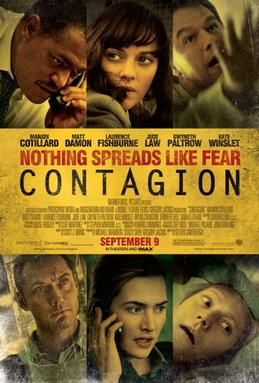From Chapter 11:
In his futuristic work The Shape of Things to Come, published in 1933, H. G. Wells relies on a novel plague to eliminate half the population of Earth in 1955–1956 and usher in a new era. Although this epidemic was largely modeled on the Black Death, Wells had his “maculated fever” waft around the world on the wind instead of spread by fleas. His fictitious disease emerged from captive baboons in the London Zoological Gardens. The Shape of Things to Come was written as a prediction of the future in an age when most scientists foresaw only the eventual eradication of infectious disease, not its resurgence.
So what should we predict? First, let’s consider the global situation. The British Empire was the last great civilization. Improved hygiene, originating from the industrialized West, led to worldwide decreased infant mortality. That, in turn, created a population boom that undermined the profitability of the European colonial empires. Despite poor hygiene and rampant disease relative to the industrial nations, the birth rate still outstrips infant mortality in Third World countries. The ongoing population explosion is the single most important biological trend in today’s world.
Denser populations, coupled with poverty, are promoting the spread of disease. Although tuberculosis is in the lead right now, most of those infected do not fall ill. As the remaining sensitive humans are weeded out, the incidence of TB in the Third World will begin to decline naturally, just as it did in Europe a century ago.
In the advanced nations, AIDS will affect homosexuals and intravenous drug users but have marginal impact on the mainstream. Its major effect, especially in the United States, will be to increase the cost of health care in the inner cities. This will help enlarge the growing gap between rich and poor. In Africa and, to a lesser extent, other third world regions, AIDS will thin out the promiscuous and malnourished, and favor the spread of religious puritanism, particularly, Islamic sects.
Still more serious, in my opinion, are malaria and other insect-borne infections that are spreading in the tropics. Rising world temperatures promote the spread of insects that transmit many tropical or subtropical diseases. Human construction and irrigation projects are helping, as is the steady increase in insecticide resistance among the insect carriers. An ugly long-term threat is the possible adaptation of tropical viruses to be carried by insects that survive in colder climates
PS. Further reading
Fascinating classics written long ago that are still good reading:
Defoe, Daniel. Journal of the Plague Year. New York: New American Library, 1960. (Original edition 1723.)
Although a work of fiction, the author lived in times when the bubonic plague was still around.
Nightingale, Florence. Notes on Nursing: What It Is and What It Is Not. New York: Dover Publications, 1969. (Original edition 1859.)
For a nice little old lady, Florence Nightingale was amazingly blunt and opinionated. She made generals tremble in their shoes. She would have made Hillary Clinton wilt!
Most important modern works:
Ewald, Paul W. Evolution of Infectious Disease. Oxford: Oxford University Press, 1994.
Seminal work on the evolution of infectious disease from the modern genetic and evolutionary viewpoint. Rather academic.
Herlihy, David. The Black Death and the Transformation of the West. Cambridge, MA: Harvard University Press, 1997.
Expounds the idea that the Black Death was responsible for the emergence of Western democracy.
McNeill, W. H. Plagues and Peoples. Garden City, NY: Anchor Press, 1976.
The most important single source that summarizes and explains the idea that epidemics affected human history.
Zinsser, Hans. Rats, Lice & History. Boston: Little, Brown and Company, 1934. (Reprinted quite frequently.)
Classic on typhus fever and history from the viewpoint of a microbiologist.
Narrow in focus, yet fascinating:
Cantor, Norman F. In the Wake of the Plague. New York: Free Press, 2001.
How the Black Death remodeled European society.
Cockburn, Aidan, and Eve Cockburn. Mummies, Disease and Ancient Cultures. Cambridge, U.K.: Cambridge University Press, 1980.
Grmek, Mirko D. Diseases in the Ancient Greek World. Baltimore: Johns Hopkins University Press, 1989.
A selection of other interesting books:
Cartwright, Frederick F., and Michael D. Biddiss. Disease and History. New York: Dorset Press, 1972.
Crawford, Dorothy H. Deadly Companions. Oxford: Oxford University Press, 2007.
Diamond, Jared. Guns, Germs and Steel. New York: W. W. Norton, 1998.
Garrett, Laurie. The Coming Plague. New York: Penguin Books, 1995.
Oldstone, Michael B. A. Viruses, Plagues, and History. New York: Oxford University Press, 1998.
Preston, Richard. The Hot Zone. New York: Random House, 1994.
Wills, Christopher. Yellow Fever, Black Goddess: The Coevolution of People and Plagues. Reading, MA: Addison-Wesley, 1996. (First published in the United Kingdom by HarperCollins as Plagues: Their Origins, History and Future.)
PS. The exit of the lockdown




